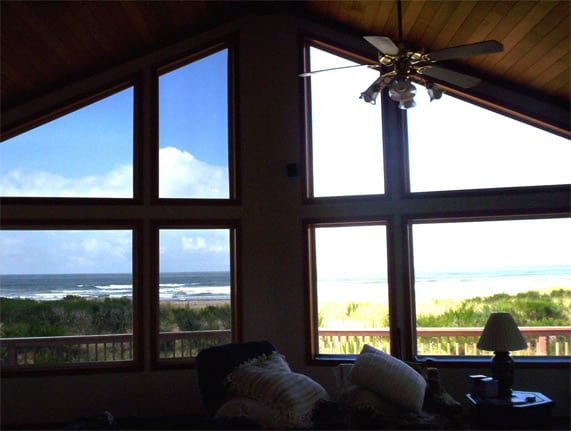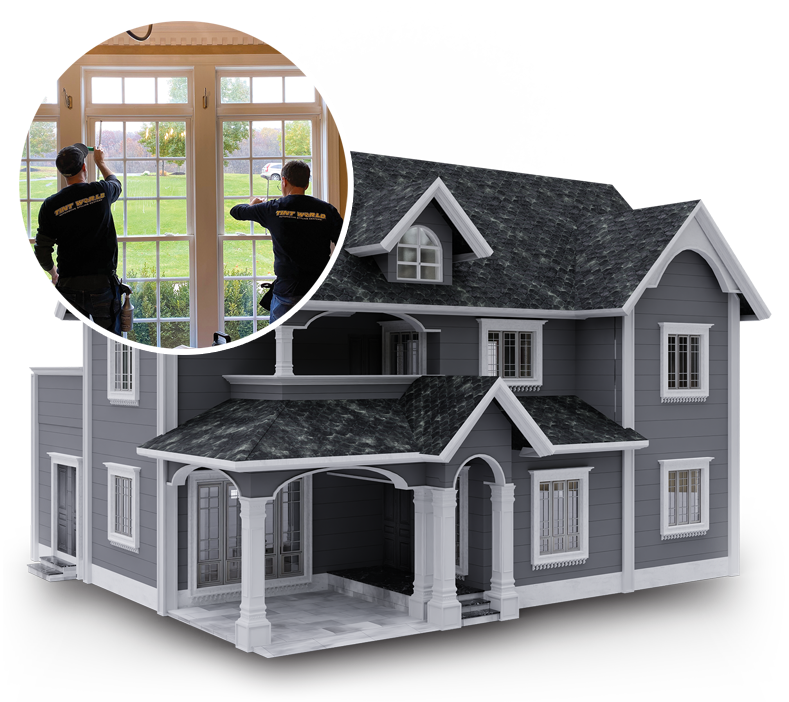Exactly How Residential Home Window Tinting Improves Your Home's Power Efficiency
Residential home window tinting presents an engaging service for property owners seeking to boost energy performance within their space. By applying specialized movies to windows, it properly decreases warmth transfer, therefore supporting interior temperatures and decreasing the demand for excessive home heating or cooling. This not just curtails power usage yet also supplies a more comfy atmosphere by mitigating glare. Nonetheless, understanding the nuances of exactly how tinting works and choosing the ideal type for your home can be critical. Curiously, what factors should one take into consideration prior to making this financial investment?
Recognizing Home Window Tinting
Recognizing home window tinting is important for property owners seeking to improve both convenience and energy performance in their home. Residential Window Tint. Home window tinting involves the application of a thin film to the interior or exterior surface area of glass windows. This film can considerably modulate the amount of sunlight and warmth that goes into a home, therefore influencing indoor climate problems
There are numerous kinds of home window tinting movies available, each with distinctive properties. The performance of window tinting is typically measured by its Visible Light Transmission (VLT) percent, which suggests just how much light can pass with the movie.
Advantages of Energy Performance
Window tinting not just boosts appearances yet also plays a substantial function in boosting energy efficiency within household areas. By lowering warm transfer via windows, colored films develop a more steady interior environment, which can result in significant reductions in energy usage for cooling and heating. This energy performance converts into lower energy costs, offering property owners with considerable long-term cost savings.

Furthermore, window tinting boosts the convenience of living spaces. By minimizing glare and blocking harmful UV rays, colored home windows create an even more pleasurable atmosphere, which can result in boosted well-being for residents. The defense against UV rays additionally helps maintain furniture and floor covering from fading, adding to the longevity of household products.
How Tinting Works
Tinting movies operate via a combination of innovative materials and technologies created to control the quantity of solar energy getting in a home. Mainly made up of polyester, these films often integrate metal or ceramic fragments that absorb and show warmth. This twin capacity allows them to dramatically decrease the penetration of ultraviolet (UV) rays and infrared radiation while allowing visible light to travel through.
The effectiveness of window tinting is gauged by its solar warm gain coefficient (SHGC), which suggests just how much solar energy is transferred with the home window. Reduced SHGC worths are more suitable as they represent higher warm denial. Additionally, home window tints can include a variety of shades, enabling homeowners to personalize their visual choices while boosting power effectiveness.
In addition, these films act as an obstacle, preventing heat loss during colder months by showing indoor heat back into the space. This thermal insulation impact matches the cooling advantages acquired throughout warmer months, adding to a well balanced interior environment year-round. By taking care of solar power successfully, household home window tinting not just boosts convenience however additionally plays an essential duty in lowering power usage and lowering energy expenses.
Choosing the Right Color

There are different types of home window movies offered, consisting of dyed, metalized, and ceramic. Dyed movies are economical yet may have restricted sturdiness. Metalized movies offer much better heat being rejected but can disrupt electronic signals. Ceramic movies give superb warmth control without endangering visibility and are highly durable, making them a prominent selection.
Visible light transmission (VLT) is one more essential element, as it indicates the amount of natural light that can go through the tinted glass. Home read the article owners need to you could try these out select a color with a VLT that matches their lights choices while still supplying adequate glow decrease.
In addition, assessing the solar warm gain coefficient (SHGC) can assist identify how well a tint can obstruct heat from sunshine. A lower SHGC indicates better warm control, inevitably enhancing power effectiveness.
Setup and Maintenance Tips
Proper installment and maintenance are crucial components in maximizing the benefits of domestic home window tinting. Professionals likewise make use of specialized methods and devices, which can enhance the toughness and effectiveness of the tint.
Complying with installment, maintenance is necessary to prolong the life of the window movie. It is advised to wait at the very least thirty days prior to cleansing the tinted windows to enable the adhesive to heal fully. When cleaning, utilize a soft towel and a mild, ammonia-free cleaner to avoid harming the film. Avoid rough products that can damage the surface area.
Attending to these problems immediately can avoid further damage and keep power performance. By sticking to these installment and maintenance tips, homeowners can guarantee their home window tinting proceeds to supply substantial power cost savings and comfort for years to come.
Verdict
In verdict, household home window tinting offers as an effective remedy for enhancing power performance within homes. By reducing warmth transfer and obstructing dangerous UV rays, home view website window films contribute to reduce power usage and boosted interior comfort.
Home window tinting entails the application of a thin film to the inside or outside surface of glass windows. By minimizing warm transfer via windows, tinted movies create a much more steady interior environment, which can lead to significant reductions in energy usage for home heating and air conditioning.The efficiency of home window tinting is measured by its solar heat gain coefficient (SHGC), which suggests exactly how much solar energy is sent via the home window. By managing solar energy successfully, household home window tinting not just enhances convenience but also plays an important function in minimizing power consumption and decreasing energy costs.
By lowering heat transfer and obstructing unsafe UV rays, home window movies add to decrease power consumption and enhanced indoor comfort.